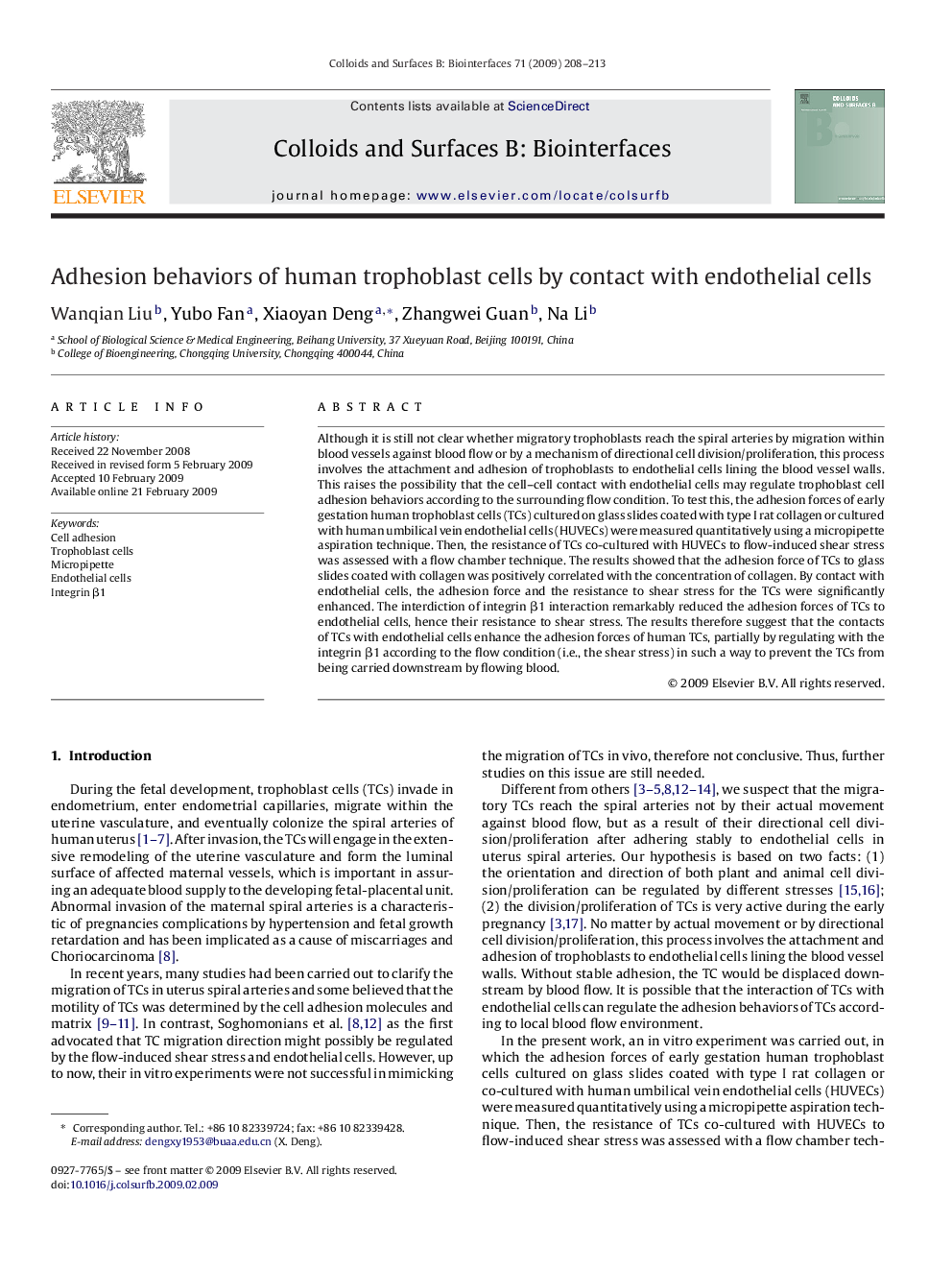| Article ID | Journal | Published Year | Pages | File Type |
|---|---|---|---|---|
| 602203 | Colloids and Surfaces B: Biointerfaces | 2009 | 6 Pages |
Although it is still not clear whether migratory trophoblasts reach the spiral arteries by migration within blood vessels against blood flow or by a mechanism of directional cell division/proliferation, this process involves the attachment and adhesion of trophoblasts to endothelial cells lining the blood vessel walls. This raises the possibility that the cell–cell contact with endothelial cells may regulate trophoblast cell adhesion behaviors according to the surrounding flow condition. To test this, the adhesion forces of early gestation human trophoblast cells (TCs) cultured on glass slides coated with type I rat collagen or cultured with human umbilical vein endothelial cells (HUVECs) were measured quantitatively using a micropipette aspiration technique. Then, the resistance of TCs co-cultured with HUVECs to flow-induced shear stress was assessed with a flow chamber technique. The results showed that the adhesion force of TCs to glass slides coated with collagen was positively correlated with the concentration of collagen. By contact with endothelial cells, the adhesion force and the resistance to shear stress for the TCs were significantly enhanced. The interdiction of integrin β1 interaction remarkably reduced the adhesion forces of TCs to endothelial cells, hence their resistance to shear stress. The results therefore suggest that the contacts of TCs with endothelial cells enhance the adhesion forces of human TCs, partially by regulating with the integrin β1 according to the flow condition (i.e., the shear stress) in such a way to prevent the TCs from being carried downstream by flowing blood.
